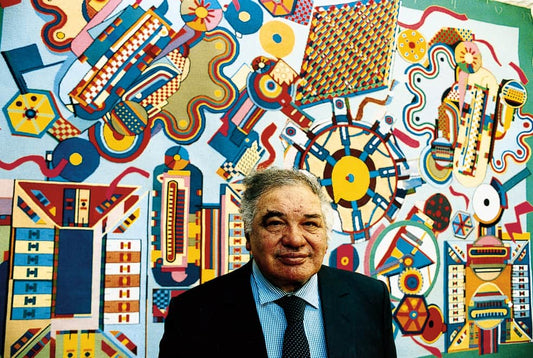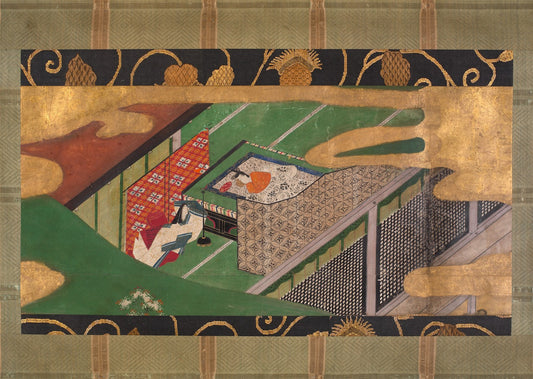Feature image: TASCHEN 1000 Pin-Up Girls. Purchase here.
The pin-up girl is easily one of the most recognizable figures of American culture. She is the picture of the American dream, with her bright red lips, hourglass figure, and wavy hair. Her image is ubiquitous, from vintage soda advertisements to tattoos. Although these images have been typically consumed by men, they were painted by several important women. These women were trailblazers in a male-centric world, using their art as a way to promote realism in depictions of the female body.
In the mid-20th century, this cultural icon emerged, capturing the spirit of an American era with her sultry gaze, crimson lips, and an allure that transcended time. The pin-up girl became more than just an image—she became a symbol of desire, freedom, and the spirit of American culture. With its intoxicating blend of innocence and eroticism, pin-up art adorned calendars, advertisements, and the hearts of a nation.

History of Pin-Up Girls
In the mid-19th century, burlesque was an increasingly popular form of entertainment. In Victorian burlesque shows, men and women piled into working-class London theaters to observe a variety of performances, from comedy to dance routines. However, burlesque shows differed from other shows in music halls in that they satirized upper-class forms of entertainment, such as opera or Shakespearean plays. The working-class theater was provocative and politically charged, poking fun at Victorian snobbery each time a chorus girl kicked her legs in the air.

The popularity of burlesque gradually led to the rise of pin-up modeling. Burlesque performers included their sensual headshots on their business cards, which were pinned in green rooms or tucked into mirror frames, coining the term “pin-up.” These erotic poses became the basis for pin-up art and modeling. Drawing upon the sexual fantasy of pin-ups, many actresses in the early 20th century began to have their portraits printed on posters to be sold for personal use. These actresses earned the reputation of being sex symbols, and the posters of celebrities like Betty Grable were widespread in the lockers of G.I.s during World War II.
Pin-up art transformed everyday activities into sensual performances, especially domesticity. During an era when women’s lives were limited, and the housewife was emblematic of the perfect American woman, the pin-up girl subverted stereotypical images of women into one of sexual agency and eroticism. These images were consumed by homesick soldiers in both world wars, but especially during WWII, as soldiers received free pin-up images disseminated to boost morale. Additionally, pin-ups were painted onto the noses of bomber jets. The image of the pin-up reminded soldiers what they were fighting for; she served as a symbol of the American girls waiting patiently for the young men to come home.
In 1953, Playboy Magazine was launched, transforming the vision of the pin-up girl into an all-American fantasy. The pin-up girl and the Playboy Bunny were celebrations of feminine beauty and allure during a socially repressed society that demanded conformity and modesty.
Female Pin-Up Artists
Although most pin-up images were produced and consumed by men, women were some of the most successful pin-up artists. Female pin-up artists distinguished themselves from their male counterparts by hinting at sexuality and nudity without actually showing it. Rather than relying on the male gaze, they transposed the female gaze into their work by using themselves and their friends as models, showing women as they truly are.
Pearl Frush, Joyce Ballantyne, and Zoë Mozert were among the female pin-up artists tasked with creating the ideal woman for American men. They often used themselves as models. They possessed oversized personalities and gumption that allowed them to become successful in a male-dominated field.
Their images, compared to male-produced pin-up art, have fewer exaggerated features and less eroticism. For example, male pin-up artist Gil Elvgreen once painted a pin-up with two left feet. Male artists were so preoccupied with displaying sexuality that they often overlooked elementary composition techniques like realism and proportion. Louis K. Meisel, a leading art dealer in the genre, states, “If you really get into it, you begin to see that women have a different way of portraying women than men do, even when they’re all trying to do something sexy for a pin-up calendar or a magazine. There is a certain sexy look, with black stockings, garters, and emphasis on certain parts of the anatomy that Elvgren, Vargas, and other male pinup artists do. I would say that the women portray very beautiful, idealized women, but the images are less erotic.”
Pearl Frush
Of the three women pin-up artists mentioned here, Pearl Frush is the most mysterious. She is perhaps best known for designing the image of Little Debbie, whose face is still plastered on snack cake packages today. In 1960, the founders of Little Debbie commissioned Frush to draw the company’s logo, based on a picture of their then-four-year-old granddaughter. Little Debbie features Pearl Frush’s signature watercolor style, with flushed cheeks and cheerful eyes.
Before designing the Little Debbie logo, Pearl Frush experienced her childhood in Iowa, eventually moving to the Mississippi Gold Coast. She is quoted as saying:
"I started drawing, like most children, as soon as I could hold a crayon. I guess I enjoyed it more than most children because I kept at it and was soon begging my mother for paints, modeling clay, etc. She was cooperative but not enthusiastic, as she believed that artists starved in garrets and only became rich and famous after they were dead.”

She studied in New Orleans, Philadelphia, New York, and at the Chicago Art Institute. She began her career as a freelance advertising artist. She worked in the late 1930s and 1940s producing calendars, including “Liberty Belles”, “Girls of Glamour”, and “Glamour Round the Clock”. Her tendency to work in watercolor and gouache meant that she did not produce a large number of paintings. Not many original pieces survive.
Frush loved water sports, and this passion is reflected in her work. Her “Aqua Tour” series depicts women in aquatic settings. It made such a splash that it broke sale records in 1947.
Joyce Ballantyne
Like Pearl Frush, Joyce Ballantyne also created an iconic logo that is still circulated today. In 1959, Ballantyne designed the Coppertone sunscreen ad, which portrays a little girl whose bathing suit is being pulled down by a dog. She used her daughter, 3-year-old Cheri Brand, as a model.
Ballantyne was born in Nebraska during World War I. She studied commercial art at the Art Institute of Chicago. In 1945, she began painting pin-ups for Brown & Bigelow after a recommendation from fellow pin-up artist Gil Elvgreen. There, she created a twelve-page calendar that had to be reprinted numerous times because it was so popular.
Her signature style evolved as she began painting portraits for entertainment and sports icons. She also painted murals at local theaters.
Ballantyne resented the fact that her most famous piece was the Coppertone ad, stating, “Big deal, it's only baby art. I didn't feel there was anything special about that ad. Just a piece I was commissioned to do and nothing more."
Zoë Mozert
Zoë Mozert was born Alice Moser in Colorado Springs to a painter and a wood sculptor. Naturally, she revealed her artistic talents early. A story states that her mother placed a Bible, a silver dollar, and a pencil in front of her at age two. She grabbed the pencil and began drawing marks.
At 17, she was accepted to the Philadelphia School of Industrial Art. However, she lost her scholarship during her junior year after posing nude for an art class at another college. After beginning her own career as an artist, she realized she had to have a precocious personality to succeed. She changed her name from Alice Moser to Zoë Mozert when she began working. She was only 5 feet tall and remarked that she often felt infantilized in her career, especially by her male counterparts. Her family was so supportive of her career that they, too, adopted her new surname.
Interestingly, her brother was her favorite model for drawing lips on her pin-ups. She posed for her own paintings by having her assistant photograph her in pin-up outfits. She was called “the pin-up who paints ‘em too.”

“My whole life centered around men and art,” she told Marianne Ohl Phillips. “Men were easy to come by, and my paintings were my children.”
Unfortunately, many original pin-ups, especially those painted by women, ended up in the trash or neglected and damaged in attics. The art form was not displayed in galleries, but used in advertisements and personal collections. Nevertheless, the art form had profound impacts on American culture. The pin-up girl survives in tattoos and fashion. Recently, a revival of pinup fashion and makeup has surfaced on social media. A new generation of models and celebrities has embraced the pin-up aesthetic, carrying on the legacies of underappreciated female artists who helped redefine femininity.
©ArtRKL™️ LLC 2021-2024. All rights reserved. This material may not be published, broadcast, rewritten or redistributed. ArtRKL™️ and its underscore design indicate trademarks of ArtRKL™️ LLC and its subsidiaries.











